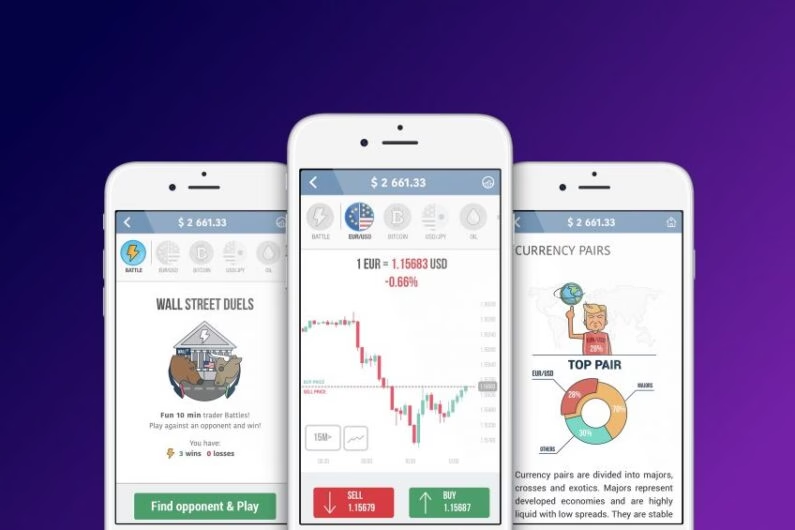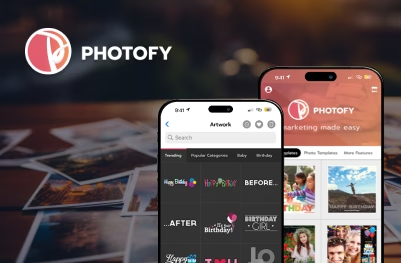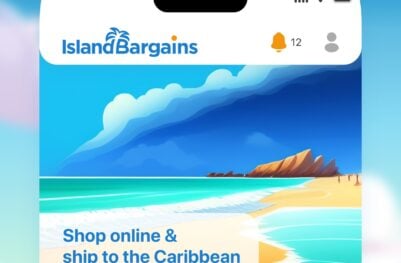- Developers
- Developer Blog
- FinTech Software Development
- How to Build Trading Platform Software

profile

By Aran Davies
Verified Expert
9 years of experience
Aran Davies is a full-stack software development engineer and tech writer with experience in Web and Mobile technologies. He is a tech nomad and has seen it all.
Are you interested in how to build trading platform software? You’ve come to the right place. In this article, I will provide a step-by-step guide for developing an online trading platform.
In this article
- 13 Steps to Build an Online Trading Platform
- Planning to Unveil Your Stock Trading Platform?
- Frequently Asked Questions on How to Build a Trading Platform
First, let’s have a look at some online trading market statistics. The global online trading market is projected to increase at a CAGR of 6.4 percent per year, reaching 11.7 billion US dollars in 2024 and increasing to 13.3 billion U.S. dollars by 2026.
If you have a stock online trading platform project in mind and need assistance with bringing your idea to life, you can partner with an expert software development company like DevTeam.Space. Contact us and get a complimentary discovery call with one of our tech account managers with relevant experience.
Let’s now see how to build a stock trading platform.
13 Steps to Build an Online Trading Platform
Take the following steps to build a trading platform solution:
1. Initiate your trading platform project
Onboard a competent project manager (PM), an experienced IT architect, and a team of business analysts (BAs) with experience working in the financial services industry.
You will build web and mobile apps, which are “Systems of Engagement” (SoEs). Therefore, you should use the Agile methodology, as I had explained in “Waterfall vs. Agile: Which Methodology Is Right for Your Project”.
Start planning for your “Minimum Viable Product” (MVP), which involves the following:
- Conducting market research to gain insights;
- Arranging discovery sessions to understand what your customers want and what “value” means for them;
- Using tools like “Pain and gain map”, prioritization matrix, etc., to prioritize features for your MVP and the overall app.
Our guide “5 tips to create a sleek MVP” can help with this.

Get a complimentary discovery call and a free ballpark estimate for your project
Trusted by 100x of startups and companies like
2. Define the project scope
To start with, I recommend that you support English-speaking customers and offer the following:
- A web app, an Android app, and an iOS app;
- Features like the TD Ameritrade Mobile app.
Note: Consider the app internationalization guidelines like keeping the code separate from the content when designing and developing the app. This will help you to offer more language support in the future. Read “The ultimate guide to mobile app internationalization” for more insights.
3. Plan to secure your trading platform
Security is a high-priority consideration for you when building a stock market app since it will process sensitive information and the sector is governed by stringent regulations. Do the following:
- Proactively mitigate application security risks like injection, XML external entities (XXE), cross-site scripting (XSS), etc. The OWASP Top Ten, a report on the top application security risks, provides valuable guidance concerning this.
- Use cloud computing judiciously, e.g., you might need to use a hybrid cloud deployment.
- Incorporate modern techniques and tools like multi-factor authentication (MFA), bank-grade encryption, next-generation firewalls, etc.
- Use real-time threat intelligence to remain on top of cybersecurity threats.
- Embrace “Compliance-as-code” to incorporate security and compliance testing early in your CI/CD pipeline.
- Secure your “application programming interfaces” (APIs).
Read our guide “How to secure your Fintech app” for more insights.
4. Formulate a development approach
I recommend that you consider the following building blocks when deciding on a development approach:
- Use managed cloud services like “Platform-as-a-Service” (PaaS) and “Mobile-Backend-as-a-Service” (MBaaS) to expedite your development.
- Design and develop APIs for core features, however, use market-leading 3rd party APIs for non-core features like push notifications.
- Create native mobile apps since they offer the best user experience, security, and performance.
- Use mobile devices and a browser lab on the cloud to improve your test coverage.
I have earlier explained the importance of this approach in “What is the best development approach to guarantee the success of your app?”.
5. Form and organize the complete development team
You ought to onboard competent people to form an effective team, therefore, consult our guide “How to find a good software developer”. Onboard the following roles:
- UI designers;
- JavaScript developers for web development;
- Mobile developers:
- Android developers with Java skills or languages such as Python, etc
- Swift developers for iOS development
- Testers;
- DevOps engineers.
You need to build a cohesive team, therefore, you should foster collaboration in the team environment. I recommend that you use the time-tested “Scrum” technique for this, which is highly suitable for Agile projects.
The PM performs the role of a “Scrum master”, as I had explained in “How to build a Scrum development team?”.
Form “Scrum teams”, i.e., small, cross-functional teams where developers and testers work together in close collaboration with the business stakeholders.
Such a team works as follows:
- A “Product owner” provides requirements in a document named the “Product Backlog”, and the team estimates them.
- The team works with the business stakeholders to schedule the requirements in “Sprints”, i.e., iterations, and this process is called “Sprint planning”.
- Scrum teams are empowered, and they hold “Daily stand-up meetings” to discuss the project status.
- They receive approval for a sprint in a “Sprint review meeting” where they demonstrate the app.
You should use a modern PM tool like Jira to manage this team.
6. Choose appropriate PaaS and MBaaS platforms
Use AWS Elastic Beanstalk, i.e., the PaaS offering from AWS to develop the web app. PaaS platforms offer the following advantages:
- They manage the cloud infrastructure, networking, operating system, middleware, and runtime environment, and this enables you to focus on coding.
- Integrating databases and APIs are easy with PaaS platforms, moreover, their DevOps and auto-scaling solutions are helpful.
Read our guide “10 top PaaS Providers” for more information.
Sign-up for AWS Amplify, i.e., the MBaaS offering from AWS using the same AWS account. You get the following advantages:
Hire expert developers for your next project
1,200 top developers
us since 2016
- Since Amplify manages the cloud infrastructure, persistent storage, etc., you don’t need to build and manage the mobile backend.
- You can easily integrate APIs when using Amplify, moreover, the platform makes it easier to implement features like user management.
Also, MBaaS platforms like Amplify make it easier to scale a mobile app, as I have explained in “How to Choose the Best Mobile Backend as a Service (MBaaS)?”.
7. Sign-up for 3rd party APIs to incorporate the non-core features
Your core features are trading-related, and while you must provide market data in your app, that’s not your core feature. I recommend that you use a reliable 3rd party API solution to access market data, and I suggest that you sign-up with Xignite.
Its “Financial Data APIs” offer information about the trading industry in general, stock quotes, ETFs, mutual funds, indices, company fundamentals, earnings & market news, etc.
Xignite claims to offer high-quality data covering global markets, moreover, it claims that its APIs are highly scalable.
You can read its “Getting Started Guide” for guidance. Contact Xignite for its pricing.
While you should offer the push notifications feature for improving user engagement, it’s not a core feature. Therefore, you should use a 3rd party bulk-SMS API solution to implement this, and I recommend Twilio.
Sign-up for the “Programmable SMS” offering from Twilio, and read “Messaging services” to learn how to integrate it with your app. You can view the Twilio pricing plans to understand how much this solution costs.
8. Develop APIs to implement the core features
Trading-related features are the core features of your stock market app. Design and develop APIs to implement these features, which will enable you to use the full range of your business capabilities. Take the following steps:
- Use tools like Postman to expedite API development and testing, moreover, use Swagger to document the APIs.
- Host the APIs using your AWS account.
- Proactively mitigate API security risks by using authentication, encryption, quotas, throttling, and gateways. You can read “What is API security?” for guidance.
- Manage your API development, staging, and production environments effectively.
- Use PostgreSQL as RDBMS and MongoDB as NoSQL databases for your APIs.
- Make sure that the APIs support the web, Android, and iOS.
- Design meaningful URL paths and effective rules for requests and responses.
Read our guide “How to build RESTful API for your mobile app?” for more insights.
9. Use a mobile device lab on the cloud for testing
You need to ensure that your mobile app works with all devices. However, you need to test your app against a wide range of devices for this.
pCloudy offers this capability, with its mobile device and browser lab that has over 5,000 devices/browsers combinations. Check out the pCloudy documentation for guidance, also, review its pricing plans.
10. Design a user-friendly user interface (UI)
A convenient and intuitive UI is important for app users. You need to offer simple yet effective UIs to your trading platform users. Appropriate guidelines could help you, therefore, consult the following:
- “User interface design guidelines: 10 rules of thumb” for designing the web app UI;
- “Material design” guidelines for the Android app UI design;
- “Human Interface Guidelines” for designing the iOS app UI.
11. Develop, test, and deploy your web app
Code the web app using Node.js, which is a popular open-source runtime environment. Take the following steps:
- Use IntelliJ IDEA, a popular IDE. Read “js and NPM” for guidance on how to code a Node.js app with it.
- Integrate the APIs.
- Test the app and deploy it on AWS Elastic Beanstalk using its DevOps tools. Read “Deploying Node.js applications to AWS Elastic Beanstalk” for guidance.
12. iOS app development
Use Swift, the modern programming language for developing apps for Apple platforms to code your proposed iOS app. You need to do the following:
- Use Xcode, the IDE championed by Apple.
- The next step is to integrate your APIs and those for Xignite and Twilio.
- Use the pCloudy mobile device lab and XCTest to test the app.
You can publish the app to Apple App Store by following the instructions in “Submit your apps to the App Store”.
Hire expert developers for your next project
13. Develop your Android app
Code the Android app using Java, and use Android Studio for development. Take the following steps:
- Integrate the APIs.
- Test the app using the pCloudy mobile device lab and Espresso.
Follow the instructions in “Publish your app” and publish the app to Google Play.
Note: Don’t forget development guidelines vary between the two platforms so you will need to account for this when developing your UI, etc., otherwise user profiles and other information may not be displayed correctly, while in the worst-case scenario, your app might not be accepted at all.
Planning to Unveil Your Stock Trading Platform?
The market for stock market apps is lucrative, however, it’s highly competitive. Your app must stand out. Expect your trading platform development project to be a complex one, partly due to the stringent data security regulations.
Take help from a reputed software development company, and read “How to find the best software development company?” to find one.
If you are looking for top programmers to help you with trading platform development but lack human resources for a task like this, you can contact DevTeam.Space, a vetted comunity of expert software developers.
Take a moment to fill out our project specification form and get a complimentary call from one of our tech account managers experienced in managing FinTech software development projects.
Our community of expert developers and dev teams has built a number of stock exchange, blockchain, and automated cryptocurrency trading apps that are in the marketplace today!
Frequently Asked Questions on How to Build a Trading Platform
Fidelity is among the great stock trading apps. As a result, it has a large number of users and is well-supported.
All of the top trading apps are safe and reliable. They conform to the laws regarding money trading in their respective countries and so must do everything possible to protect your personal details and money. For example, in the US, online trading platforms are regulated by the U.S. Securities and Exchange Commission (SEC) and self-regulatory organizations, like FINRA (Financial Industry Regulatory Authority).
SIPC stands for Securities Investor Protection Corporation. It mandates membership of most US-registered broker-dealers. Forex is the global foreign exchange market for trading currencies at variable exchange rates.
If you don’t have trading software development experience then onboard the relevant developers from a reputable software development company like DevTeam.Space and start with trading or stock market app development. When planning your stock trading application, keep in mind that functionality is key to its success, it should have a clear UI that gives all the data related to e-trade from all the financial markets of the different countries traders wish to trade in.
Acorns is an automated trading system that does all the financial investments or trading activities of users like a robo advisor. It uses information provided by users to select collections or portfolios of EFTs, etc.
Related Stock Trading App Development Articles
Learn more about building stock trading apps from our expert articles:

Alexey Semeney
Founder of DevTeam.Space
Hire Alexey and His Team To Build a Great Product
Alexey is the founder of DevTeam.Space. He is award nominee among TOP 26 mentors of FI's 'Global Startup Mentor Awards'.
Alexey is Expert Startup Review Panel member and advices the oldest angel investment group in Silicon Valley on products investment deals.


